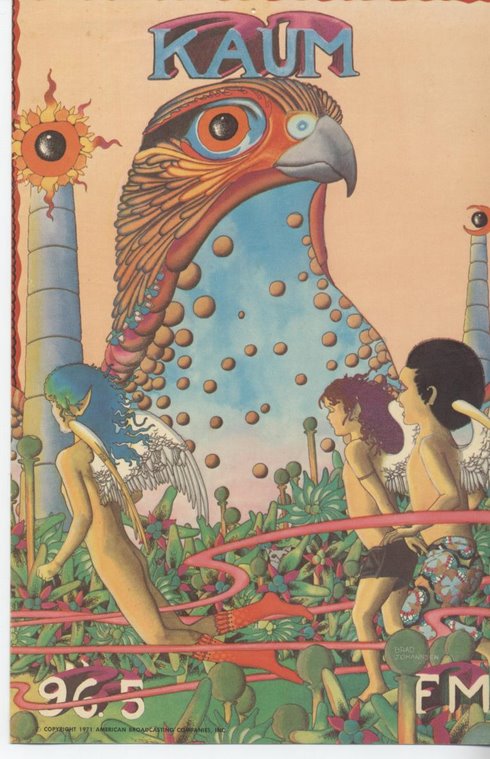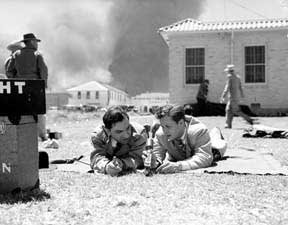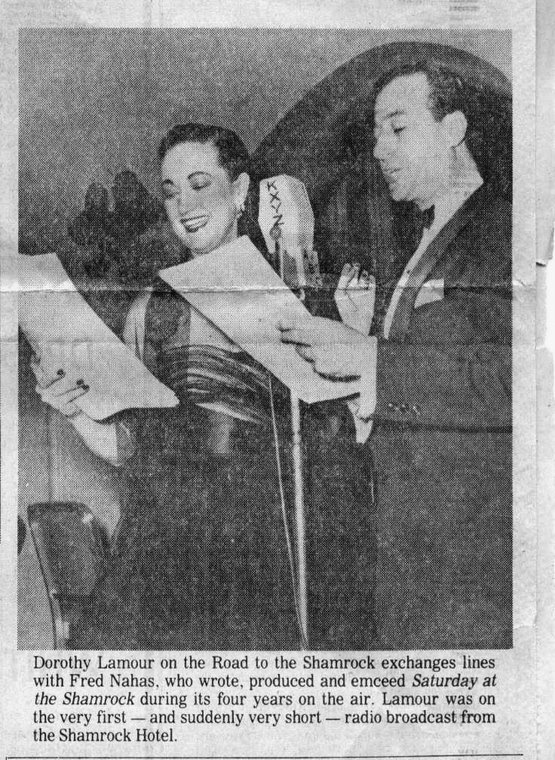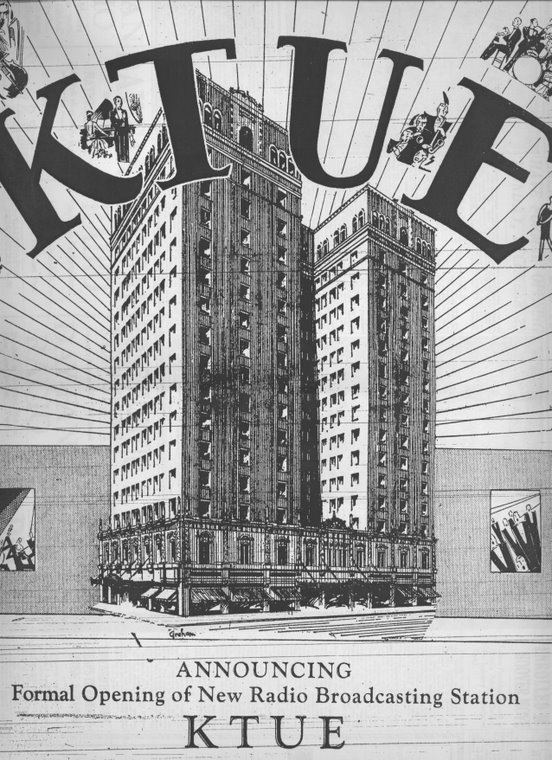Broadcasting Yearbook gives March 10, 1962, for the launch of KHCB-FM, at 105.7 mc. A religious station since its inception, the calls stood for ‘Keeping Him Close By.’ There was no story in the Chronicle, not even in the Church Chronicle, a weekly special section. Listings first appeared in the paper on March 16. The station operated originally only from 4pm to Midnight daily.
The Post published a feature article on the station in August of 1963. At that time the station was operating from studios at 126 Almeda-Genoa Road and had experienced recurring difficulties meeting its budget each month, but operations had expanded to 24 hours a day. There were only 4 paid employees, only 3 of which were full-time. Between the hours of 7pm and 6am volunteers exclusively manned the station. Funds were being raised to make a down payment on a new 10,000 watt transmitter to replace the 1000 watt unit in use. The article stated the call letters just stood for Houston Christian Broadcasters.
The Yearbook gives August of 1962 for the launch of KLVL-FM , 92.5 mc, in Pasadena, but the station never appeared in either the Chronicle or Post listings any time during the month, nor were there any stories about the station. It first appeared in Chronicle listings on September 7 showing that it was simulcasting the programming of KLVL-AM. By a year later, the programming was listed in the Post as ‘Latin American Popular Music.’
The station was sold in 1969 to Sudbrink and became KFMY-FM with a transmitter atop the Pasadena State Bank and only a few hunded watts of power. Due to complaints by KFMK, the calls were changed to KYED-FM, pronounced 'keyed;' they played oldies and big band music. Then the station was sold again and became KYND, “Kind 92,” boosted power to 100, 000 watts allowing coverage of the entire Houston area and carried the beautiful music syndicated format of Stereo Radio Productions, or SRP, from Jim Schulke and Phil Stout. This format was popularly known as the Schulke format, although Jim Schulke was the sales part of the team and Phil Stout did the programming. KYND became a ratings leader in Houston for a dozen years, forcing KXYZ-AM to drop beautiful music programming, before being defeated in the ratings wars itself by KODA-FM in late 1981. It flipped to 93Q, KKBQ-FM in late 1982 with John Lander and the Q Morning Zoo and played Contemporary Hit Music. It had moved to 92.9 MHz in late 1982, prior to the format flip. Those call letters are still used, although the station flipped to Country music in the fall of 1991.
Broadcasting Yearbook for 1979 showed my home town of Lake Jackson got am FM station in April, 1963 but like many dates in the Yearbook that was false. An application was filed in April, 1962, by a company called Texas Audio Electronics for an FM station in Lake Jackson to operate on 92.3 megacycles with 3.65 kilowatts from a 192' tower. Texas Audio Electronics was composed of Jim Hairgrove and his other investors in the partnership that owned KBRZ, Freeport. There must have been a modified application filed along the way which was missed by Broadcasting or the OCR software because TAE was granted a construction permit for an FM to operate on 107.3 mc, channel 297, with 28 kilowatts from a 180' antenna on January 20, 1964. The estimated cost to build the new station was $21,874, the anticipated operating cost for the first year was $34,000 and revenues of $25,000 were projected. The call letters KLJT-FM were assigned February 10, 1964. When the FM station was sold in February, 1969, Broadcasting magazine stated it had been put on the air in May, 1964. The earliest mention of the station I can find in the available issues of the Brazosport Facts online appeared on Friday, May 29, 1964. In a story about the dedication of a new youth baseball field it was mentioned the facility was located behind the radio station. I have found no more definite date for the actual start of broadcasting and Broadcasting did not report the granting of a license for the station until September 2, 1964. KLJT-FM's original studios were just 3 long blocks from my home, on Willow Drive at the old Angleton-Clute Road, in a building that now houses the Brazosport Board of Realtors. It was a small building with the transmitter and antenna right outside the back door. An SCA permit was granted to Texas Audio Electronics in August, 1965, and a background music service called Musiplex was launched.
Hairgrove died in April, 1967, while serving his first term as a State Representative from Brazosport in Austin. In February of 1969, his widow sold both KLJT-FM, Lake Jackson, and KBRZ, Freeport, to Wayne Marcy and George A. Mayoral, doing business as Summit Broadcasting. Marcy was a sales representative for radio equipment in Houston and Mayoral, of New Orleans, had radio and TV properties in Louisiana and Puerto Rico. The sale took effect on Saturday, July 19, 1969.
In November, 1973, Broadcasting reported the station had applied for a call letter change to KGOL-FM.
On November 7, 1979, Broadcasting reported KGOL-FM was sold for $784,000. The sellers were Coastal Broadcasting, consisting of Jim Payne and Lewis Wilburn. The buyer was John Brown Broadcasting, owned by John Brown University of Siloam Springs, Arkansas. There had apparently been another change of ownership in the 1970s. On the same day the sale was approved, the FCC approved a Construction Permit for a new transmitter location and facility to be two miles northwest of Texas 35, four miles northwest of Danbury, TX, with 100,000 watts ERP horizontally and vertically and a new 940' antenna. The station at that time was operating from a 180' antenna with 28 KW.
Payne, one of the sellers, had applied for a permit for an FM station in Yoakum, TX, on 102.3 mc with 3 KW of power in March of that year.
Station officials for KGOL told the Chronicle the format was Christian Beautiful Music, playing such artists as B.J. Thomas. The frequency subsequently was changed to to 107.5. The station has also been known as KZFX, (1986), Z107, and KRQT. It became KTBZ in early 1995 and then switched frequencies with co-owned 94.5 KLDE and became KLDE-FM, Oldies 107.5. Call were flipped again on December 14, 2006, to KHTC-FM. As of June 1, 2009, the station became known as 107.5 The Eagle with the calls officially KGLK-FM.

Original studios of KLJT-FM on Willow Drive in Lake Jackson.
EDITED January 25, 2014, to provide additional details about the early years of KLJT-FM, Lake Jackson and a picture.









































































